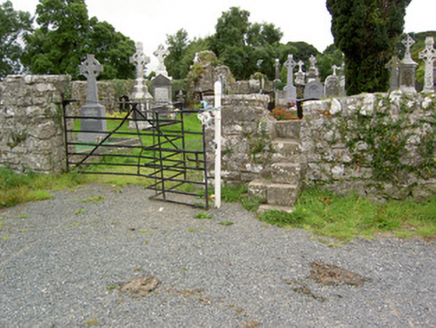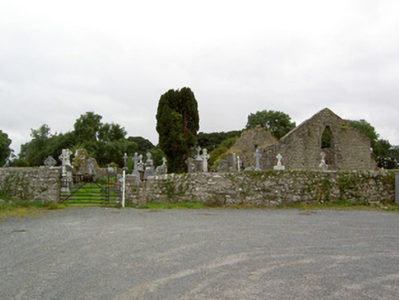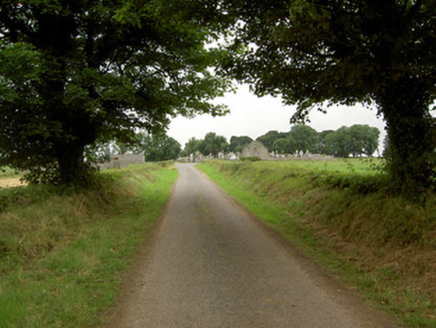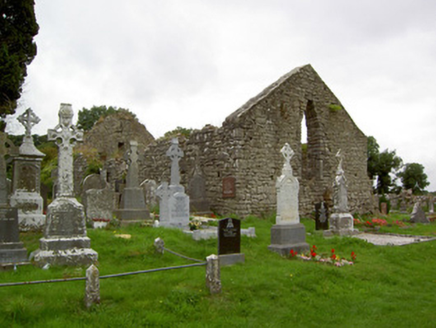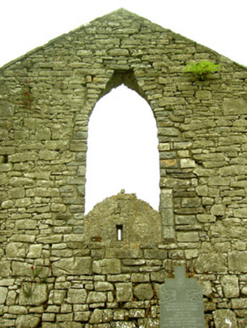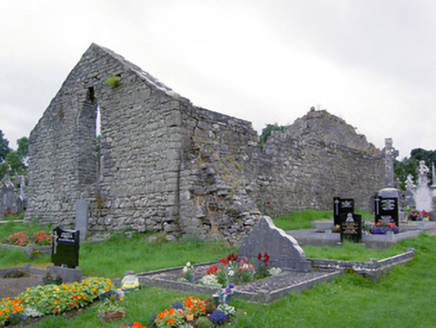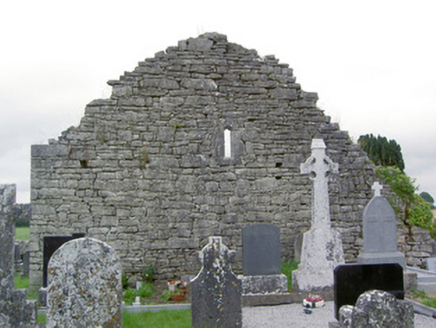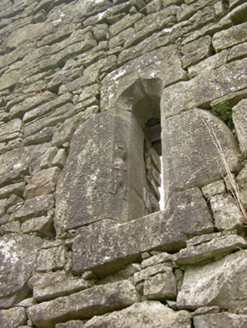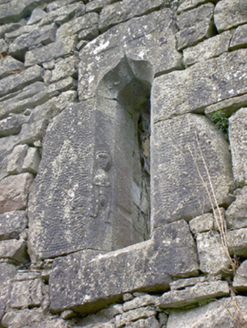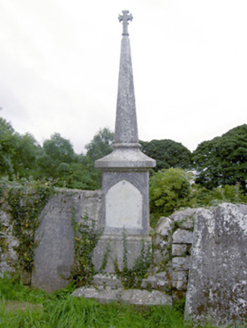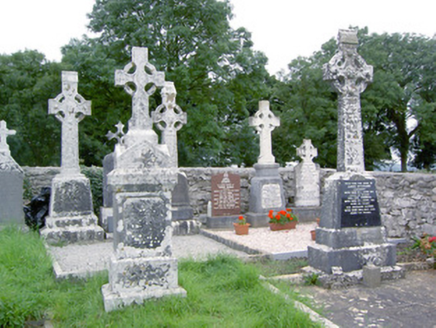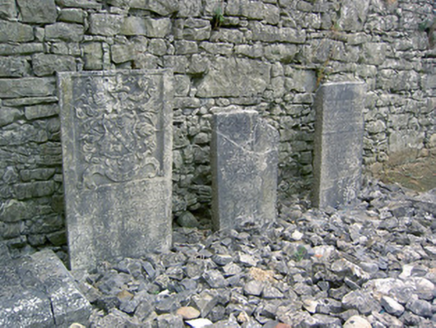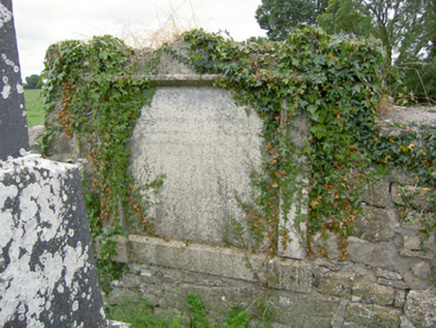Survey Data
Reg No
13401705
Rating
Regional
Categories of Special Interest
Archaeological, Architectural, Artistic, Social
Original Use
Church/chapel
Date
1650 - 1950
Coordinates
199796, 266065
Date Recorded
15/08/2005
Date Updated
--/--/--
Description
Graveyard on sub rectangular-plan, built c. 1650, and containing a collection of grave markers, both upstanding and recumbent, of mainly eighteenth and nineteenth century date. Number of late-seventeenth century grave markers to site. Still in use. Detached single-cell Church of Ireland church, built c. 1650, incorporating fabric of earlier building to site. Now a roofless ruin. Roughly coursed squared limestone and rubble limestone construction with roughly dressed flush limestone quoins to the corners. Base batter to east gable end, and rubble stone buttress to the east end of the north elevation. Pointed arch window opening to west gable end, ogee-headed window opening with tooled limestone surround to west gable end having carved sheela-na-gig or an exhibitionist figure (LF017-013002-) in bas relief to the north jamb. Arched doorway (possibly originally Tudor-arched, now partially collapsed) to the east end of the south elevation. Site surrounded by rubble stone boundary walls. Entrance to the southeast comprising a wrought-iron flat bar gate and wrought-iron pedestrian turnstile gate. Cut stone stile to the north of gateway. Set well back from road to the south of Lanesborough, close to the remains of Rathcline Castle (LF017-019---) to the north, and close to the shores of Lough Ree to the west.
Appraisal
This graveyard contains a collection of mainly eighteenth and nineteenth century grave markers, both recumbent and upstanding. Many of these grave markers are finely carved in good quality stone and are of high artistic merit, including a number of obelisk and High Cross-type memorials. The graveyard retains grave markers dating from the mid-seventeenth century to the present day, providing an interesting insight into the stylistic development of grave markers over a considerable period of time. The earliest legible grave marker is dated, 1650 (R.F and V.F.), and there are a number of late-seventeenth century and early-eighteenth century grave markers to site (including to the interior of church, one to Anna Forbes dated 1696 - LF017-013005-). The graveyard has a ruinous late-medieval or post medieval church as its centrepiece (LF017-013001-), containing the fabric of an earlier church. This church was described as 'ruinous' c. 1830 (O'Donovan letters) but may have been in use in the eighteenth century. Lewis (1837) described the church as follows: 'Near the ruins of the castle are those of the ancient church, said to have been destroyed from the opposite bank of the Shannon; part of the steeple is yet standing, and the cemetery is still used by the Roman Catholics'. The surrounding boundary is very thick in places, and may be of considerable antiquity, perhaps dating from the late-medieval period. The simple wrought-iron gates and the stone stile adjacent, complete the setting on this interesting composition.
